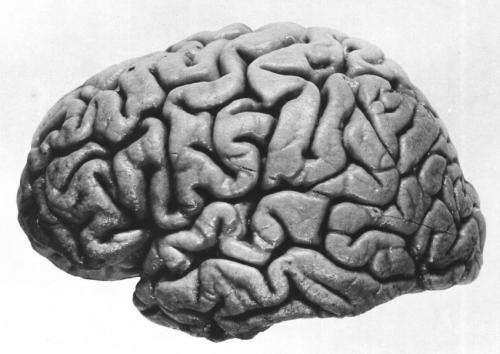Researchers identify possible physiological cause of brain deficits with aging

Like scratchy-sounding old radio dials that interfere with reception, circuits in the brain that grow noisier over time may be responsible for ways in which we slow mentally as we grow old, according to the results of new studies from UC San Francisco on young and older adults.
The new intracranial and electroencephalogram (EEG) research, published online September 22, 2015, in The Journal of Neuroscience, supports the neural noise hypothesis, which proposes that the signal-to-noise ratio in nerve circuits diminishes with aging and leads to worse performance. The studies were designed and conducted by Brad Voytek, PhD, when he was a postdoctoral research fellow working in the lab of Adam Gazzaley, MD, PhD, professor of neurology, physiology and psychiatry at the UCSF Center for Integrative Neuroscience.
In two new experiments, Voytek, now an assistant professor of cognitive science and neuroscience at UC San Diego, found that background noise in key cortical regions of the brain responsible for higher functions was associated with poorer memorization of visual information, and that this noise also was associated with age. He concluded that neural noise might be the mechanism behind aging-associated loss of cognitive ability, slowing of behavioral responses, uncertain memories and wavering concentration.
"Our measurement of noise seems to show up in aging, just as we thought it would," Voytek said.
The noise measured in the studies was random signaling that did not fit the pattern of the brain's natural oscillations. These oscillations are rhythmic patterns of electrical activity generated by nerve cells, or neurons, linked within the brain's circuitry. This activity occurs in addition to electrical signals generated by individual neurons.
In recent years brain oscillations have become an intense focus of research by Voytek and others seeking to discover any functional roles they might play. Emerging evidence suggests that oscillations might prime nerve circuits to respond more efficiently to stimuli.
"Imagine that individual neurons are like surfers," Voytek said. "Nearby surfers experience the same waves, which are like the oscillations linking neurons in the brain. But like noise, additional interfering factors often disrupt the perfect wave at different times and different spots along the beach."
In one experiment on 15 consenting subjects, Voytek collected and analyzed voltage measurements from electrodes placed directly in contact with cortical regions of the brain during surgery by neurosurgeons searching for the specific location that triggered each patient's seizures. The intracranial study design eliminated detection of confounding signals from muscle. The alert study subjects performed a listening task, which in one of Voytek's earlier human studies resulted in a high degree of coordinated brain oscillations in these regions. In the new experiment Voytek's research team found that noise in the frontal cortex and in the temporal cortex was associated with age.
In the second experiment, the researchers collected data from EEG electrodes placed on the scalps of 11 healthy participants between the ages of 20 and 30 and 13 healthy participants between the ages of 60 and 70, while the research subjects performed a visual memorization test.
Researchers flashed one, two or three colored squares for less than one-fifth of a second, gave the subjects almost one second to memorize the colors, and then flashed a second display and asked the participants if the colors matched. The researchers used mathematical algorithms to extract measures of noise in the oscillations from data collected during the interval when the subjects were trying to memorize the colors.
On average, older subjects performed worse than younger subjects. The scientists determined that this poorer performance was due to additional noise in nerve circuits in the visual cortex; neurons did not appear to coordinate as well in generating lower-frequency oscillations. When the researchers accounted for the noise, age was no longer an independent, significant factor in performance in this experiment.
Voytek suggested an analogy. "A big group of friends can have a fairly normal conversation at home," he said, "but in a crowded bar everyone keeps asking each other, 'What did you say?' Similarly, instead of having a normal conversation, the neurons that make up the memory networks in older adults seemed to be talking over one another, leading to a communication breakdown and degrading their memory performance.
"I think these types of experiments will allow neuroscientists to explore the neural underpinnings of cognitive changes across normal aging and in a variety of disease states, including autism, Parkinson's and schizophrenia, each of which is associated with breakdowns in neural oscillations."















